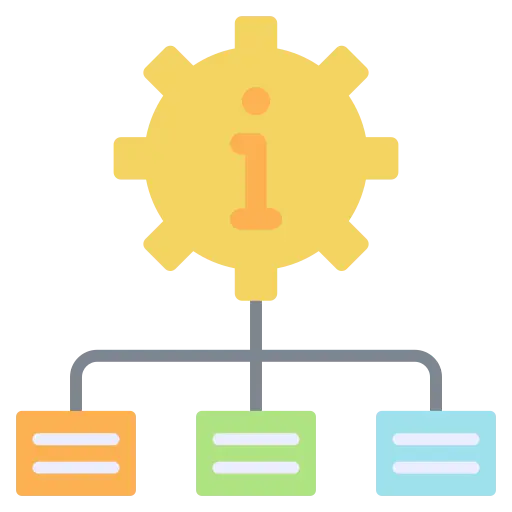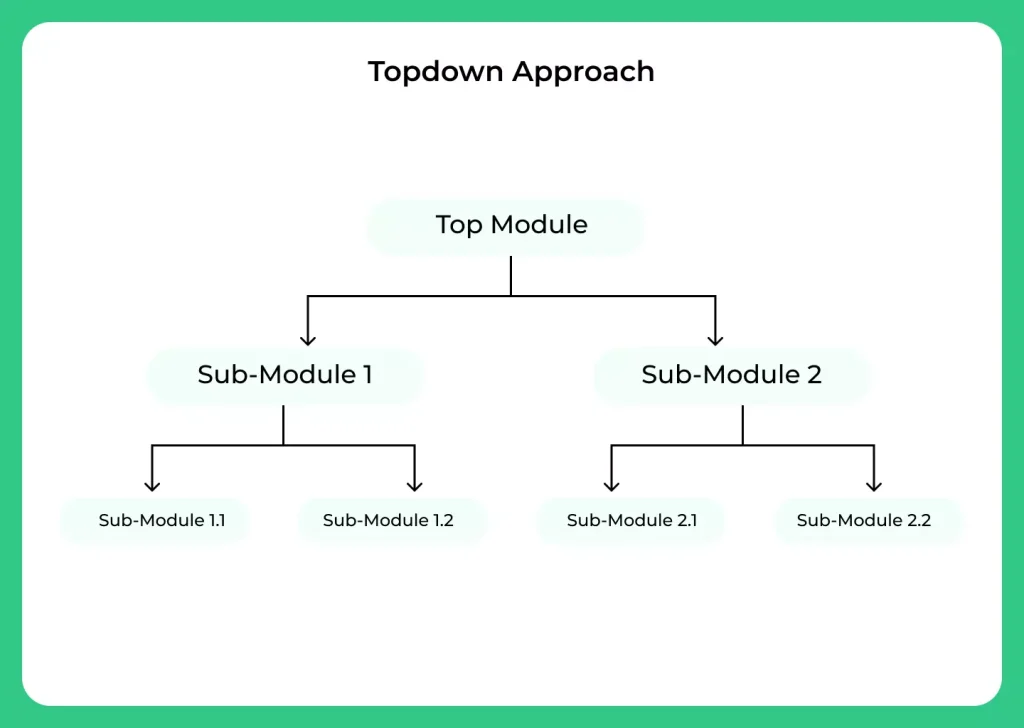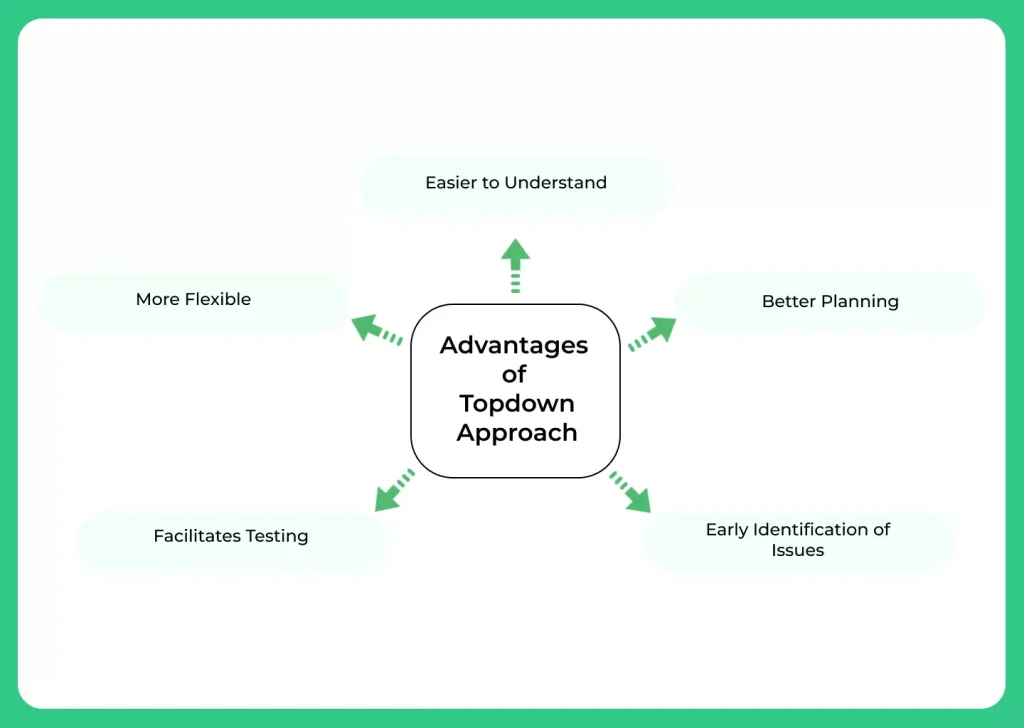Top Down Approach in Software Engineering
What is Topdown Approach in SDLC?
The top-down approach in software development is a method of designing and building a system by starting with a high-level design and then progressively refining the design with increasing levels of detail. It is also known as the stepwise refinement approach.
In the top-down approach, the development process begins with a high-level design of the system, which is then broken down into smaller, more manageable modules. Each module is then designed and implemented in a bottom-up manner, starting with the low-level details and working up to the higher-level design.

Processes in Topdown Approach
The top-down approach to software development involves breaking down a large, complex problem or system into smaller, more manageable pieces and then working on each piece individually. This approach is often used to develop software systems because it allows developers to focus on one part of the system at a time, which can make the development process more organized and efficient.
There are several steps involved in the top-down approach to software development:

Define the overall system requirements:
The first step is to define the overall goals and objectives of the system, as well as any specific requirements or constraints.
Break down the system into smaller components:
Next, the system is broken down into smaller, more manageable components or modules.
Develop each component individually:
Once the system has been divided into smaller components, each component can be developed individually.
Test and debug each component:
As each component is developed, it is important to test and debug it to ensure that it is working properly.
Integrate the components:
After each component has been developed and tested individually, they can be integrated into the larger system.
Test the entire system:
Once all of the components have been integrated, the entire system can be tested to ensure that it is functioning as intended.
Maintain and update the system:
After the system has been implemented, it will need to be maintained and updated on an ongoing basis to fix any bugs or to add new features.
What are Stubs in Topdown Approach?
In the Top Down Approach to software development or testing, stubs are temporary modules or dummy programs used to simulate the behavior of lower-level modules that have not yet been implemented.
What is a Stub?
A stub is a piece of code that mimics the interface and behavior of an actual module (usually a called or dependent function), but with simplified or hardcoded logic.
Role of Stubs in Top Down Approach:
In the Top Down Approach, development or testing starts from the top level modules and goes downward. If lower level modules aren’t ready yet, stubs are used to:
- Replace missing lower level components
- Allow testing of the higher level logic
- Simulate responses from lower modules
2- Values of parameter is displayed.
3- Returns the values that are used by the modules.
4- Returns the values selected by the parameters that were used by modules being tested.
Prime Course Trailer
Related Banners
Get PrepInsta Prime & get Access to all 200+ courses offered by PrepInsta in One Subscription
Advantages of Topdown Approach in SDLC

Disadvantages of Topdown Approach in SDLC
In a top-down approach, the design process begins with the big picture and breaks it down into smaller, more manageable pieces. This approach has some disadvantages:
- It can be inflexible:
Since the design process starts with the big picture, it can be difficult to make changes later on in the process.
- It can be time-consuming:
Breaking down the big picture into smaller pieces can take a lot of time, especially if the design is complex.
- It can be costly:
The top-down approach may require more resources upfront, as all of the planning and design work needs to be done before the project can be implemented.
- It can be difficult to manage:
With so many pieces and components, it can be challenging to keep track of everything and ensure that everything is working together as intended.
- It can be less effective for creative projects:
The top-down approach may not be as effective for projects that require a lot of creativity and innovation, as it can be inflexible and leave little room for experimentation.
Uses of the Top-Down Approach
- System Design Clarity: Helps in visualizing the whole architecture early on.
- Easier Project Management: Managers can plan and allocate tasks in stages.
- Controlled Development Flow: Development follows a defined structure, which reduces ambiguity.
- Better Integration Planning: Since the high level design is clear, integration points between modules are well defined from the beginning.
- Useful for Large Projects: Especially when the entire system must meet specific business goals or compliance standards.
FAQs
The Top Down Approach starts with designing the high level system and then breaking it down into smaller, detailed components. It focuses on understanding the overall system architecture first.
It provides a clear structure and better control over the development process. Early identification of major system components helps in better planning and design.
Top Down starts with the overall design moving toward details, while Bottom Up builds the system from small modules upward. The choice depends on project requirements and complexity.
Get over 200+ course One Subscription
Courses like AI/ML, Cloud Computing, Ethical Hacking, C, C++, Java, Python, DSA (All Languages), Competitive Coding (All Languages), TCS, Infosys, Wipro, Amazon, DBMS, SQL and others



Login/Signup to comment